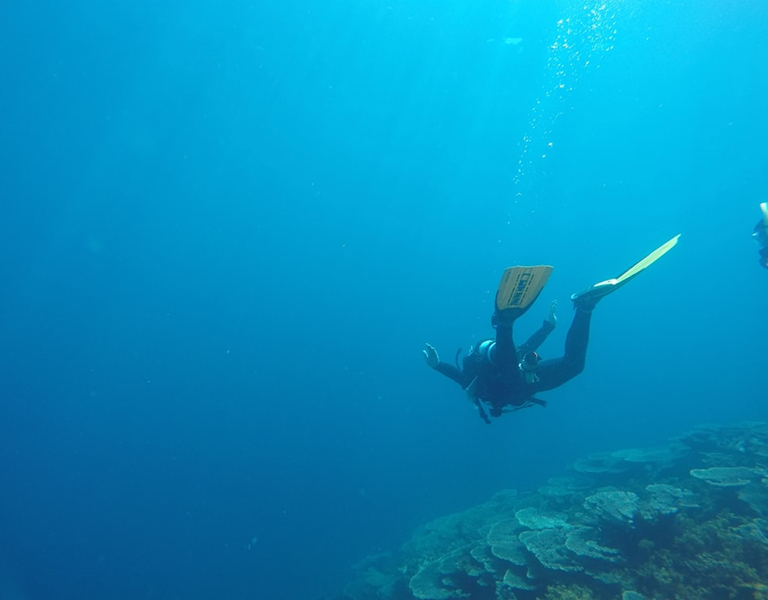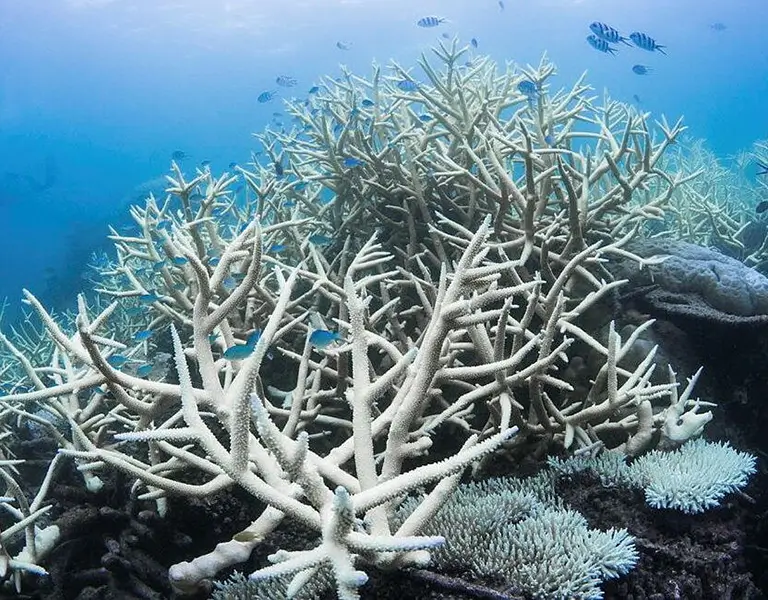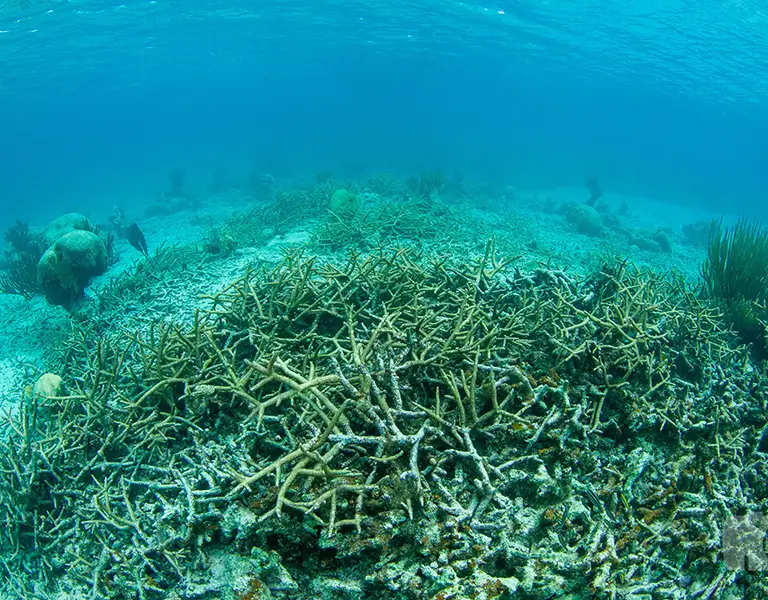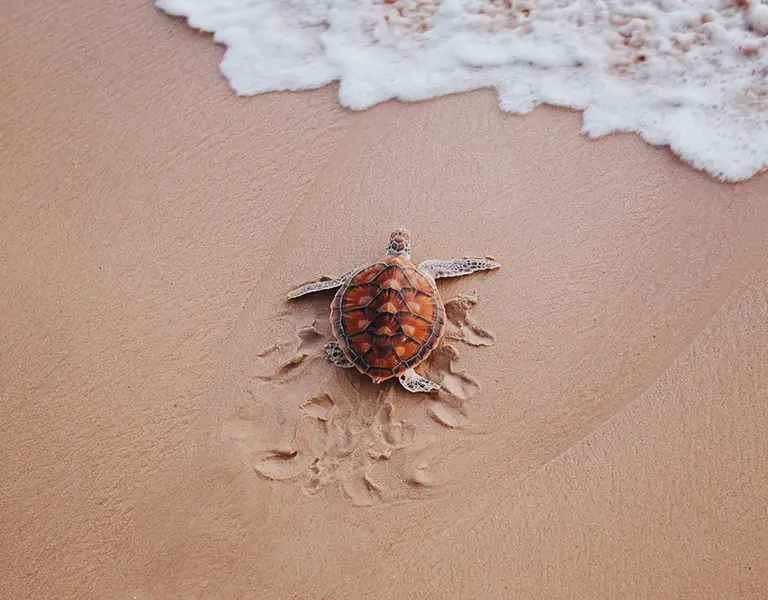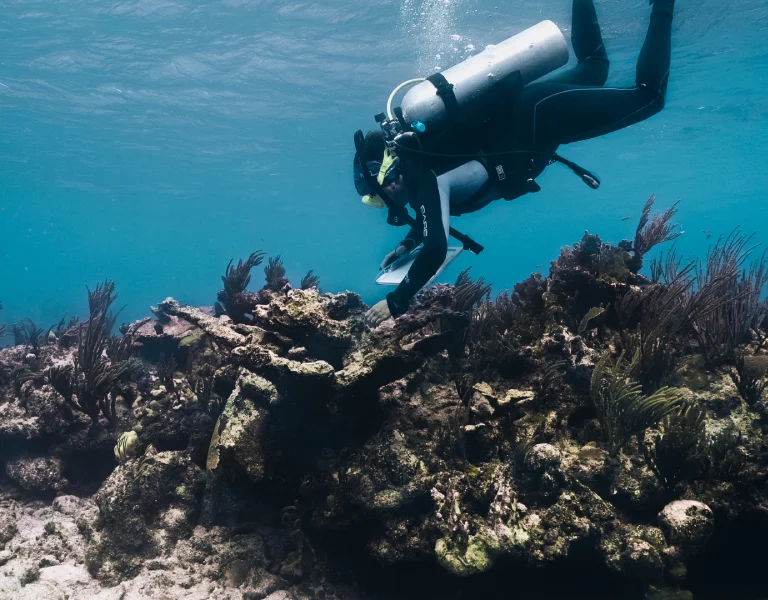Coral reef regions span across tropical and subtropical oceans, creating some of Earth’s most biodiverse ocean ecosystems. These underwater rainforests support millions of species while providing crucial ecosystem services to coastal communities worldwide. Understanding where reefs are located and how they function helps us appreciate their immense value and the urgent need for their protection.
Key Takeaways
- Global distribution: Coral reefs exist primarily between 30°N and 30°S latitude in warm, shallow tropical waters with optimal sunlight penetration
- Three main types: Fringing reefs, barrier reefs, and atolls form distinct coral reef biosystems based on their relationship to shorelines and geological features
- Biodiversity hotspots: These locations support 25% of all marine species despite covering less than 1% of ocean waters
- Critical threats: Ocean temperatures, coral bleaching, and human interventions pose increasing risks to coral reef communities worldwide
- Conservation importance: Reef regions provide essential shoreline protection, fisheries, and ecosystem services valued up to $9.9 trillion annually 1
Understanding Coral Reef Sites and Their Formation
What Defines Coral Reef Destinations
Reef systems are determined by specific environmental conditions that allow reef building corals to thrive. These remarkable coral animals require warm water temperatures between 68-86°F (20-30°C), abundant sunlight for their symbiotic algae, and relatively shallow waters typically less than 200 feet deep. The global distribution of marine reefs follows these strict parameters, creating a belt of marine biodiversity around the world’s tropical regions.
Hard coral species form the foundation of these ecosystems through their calcium carbonate skeletons, which accumulate over thousands of years to create massive reef structures. The reef building corals work in partnership with zooxanthellae algae, creating a symbiotic relationship that enables rapid coral growth and the vibrant colors we associate with healthy reef ecosystems.
The Three Primary Types
Fringing Reefs
Fringing reefs represent the most common type of reef regions, growing directly attached to shorelines or extending short distances from the coast. These reefs develop in shallow waters where sunlight can easily penetrate to support photosynthesis in coral animals. Fringing reefs are particularly abundant around volcanic islands in the Pacific Ocean, where they form narrow bands along the coastline.
The reef structure of fringing reefs typically includes a shallow reef flat that may be exposed during low tide, creating unique tidal pool environments. These areas serve as nurseries for juvenile fish species and provide critical habitat for countless marine organisms adapted to fluctuating water levels and wave energy.
Barrier Reefs
Barrier reef systems create some of the most spectacular coral locations on Earth. These massive reef structures run parallel to coastlines but are separated from the shore by deeper lagoons or channels. Australia’s Great Barrier Reef stands as the world’s largest barrier reef system, stretching over 1,400 miles along the east coast and supporting an incredible diversity of symbiotic reef systems.
The coral community structure in barrier reefs creates distinct zones, from the protected lagoon side to the high-energy ocean-facing slopes. This diversity of habitats within a single reef system supports different coral species and marine life adapted to varying wave energy, water depth, and current patterns.
Atolls
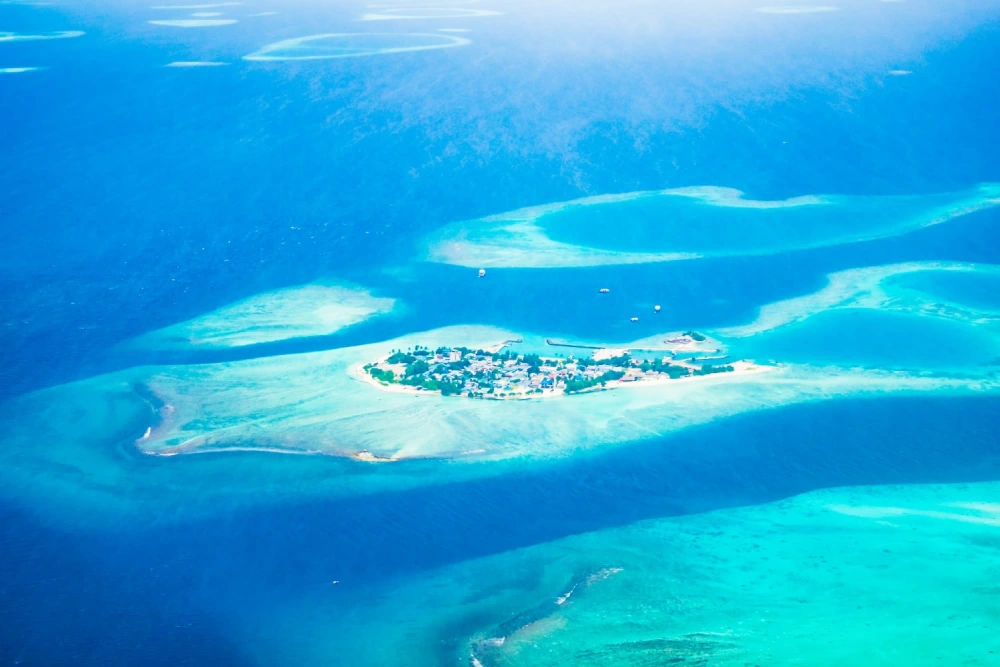
Atolls represent perhaps the most fascinating reef habitats, forming ring-shaped reefs that encircle central lagoons. These unique coral ecosystems typically develop around submerged volcanic islands, where coral growth continues even as the original island subsides below sea level. The Solomon Islands and other Pacific island chains contain numerous examples of these remarkable reef formations.
The atoll formation process demonstrates the incredible adaptability of reef building corals, as they continue growing upward to maintain their position in shallow waters despite changes in sea level and geological subsidence over geological time scales.
Major Coral Habitats Around the World
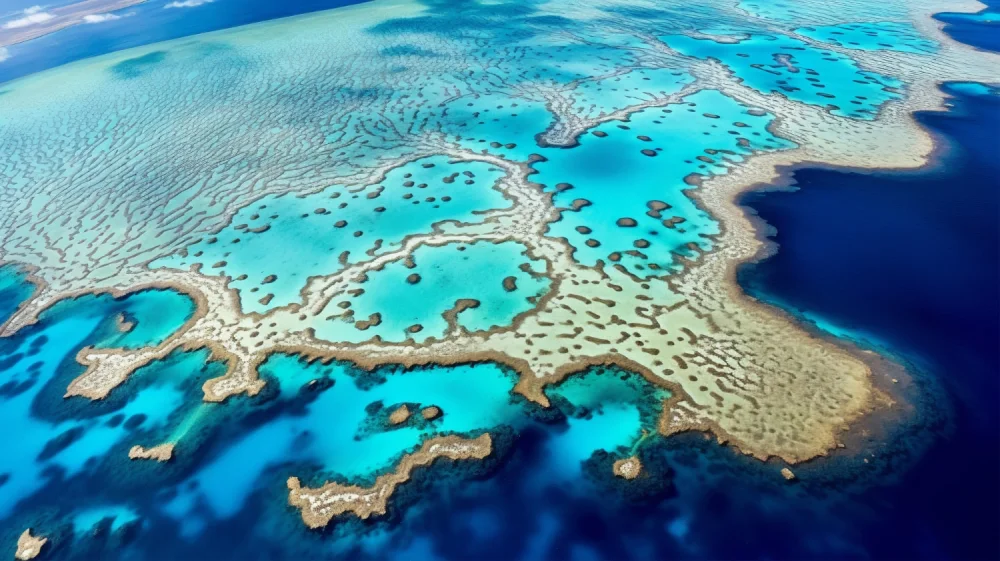
The Indo-Pacific Region: Earth’s Coral Triangle
Australia’s Great Barrier Reef
Australia’s Great Barrier Reef represents the world’s largest coral reef system and one of the most iconic Reef ecosystems on the planet. This massive ecosystem spans over 133,000 square miles and supports more than 400 coral species, 1,500 fish species, and countless other marine organisms. The Great Barrier Reef’s reef structure includes both fringing reefs along the coast and barrier reef formations further offshore.
The reef areas within the Great Barrier Reef system vary dramatically in their coral cover and species composition. Northern sections typically show higher coral diversity, while southern areas experience cooler temperatures that limit some tropical coral species. This variation creates distinct symbiotic reef systems adapted to local environmental conditions.
Recent coral discoloration events have significantly impacted many reef areas within the Great Barrier Reef system. Rising temperatures have stressed coral animals, leading to widespread discoloration events in 2016, 2017, 2020, 2022, 2024, and 2025. The ongoing fourth global coral bleaching event, confirmed by NOAA in April 2024, has affected 83.9% of the world’s coral reef area—making it the largest bleaching event on record2. These events highlight the vulnerability of even the world’s largest reef systems to global warming and climate change impacts.
Southeast Asian Locations
The Coral Triangle, encompassing waters around Indonesia, Malaysia, Philippines, Papua New Guinea, Timor-Leste, and the Solomon Islands, contains the highest diversity of reef areas on Earth. This region supports over 600 coral species and represents the center of marine biodiversity for coral ecosystems worldwide.
Indonesian coral locations include some of the most pristine reef systems remaining on Earth. Raja Ampat, often called the “Crown Jewel of Marine Biodiversity,” supports incredible coral cover and fish species diversity. These reef areas benefit from complex oceanographic conditions that bring nutrient-rich waters while maintaining optimal temperatures for coral growth.
The Philippines archipelago contains over 26,000 square kilometers of coral locations, supporting both fringing reefs around volcanic islands and barrier reef systems. However, many reef areas in this region face pressure from human impacts, including coastal development, pollution, and destructive fishing practices that threaten symbiotic reef systems.
Pacific Island Locations
Scattered across the vast Pacific Ocean, thousands of coral locations support island communities and marine biodiversity. These reef systems often form around volcanic islands, creating diverse habitat types from shallow lagoons to deep reef slopes facing the open ocean.
The Solomon Islands represent a particularly important region for coral locations, supporting high coral diversity and serving as stepping stones for marine species dispersal across the Pacific. Many of these reef areas remain relatively intact due to their remote locations and lower human population pressures.
French Polynesia’s reef areas include some of the most studied atoll systems in the world. These reef environments provide insights into coral adaptation to different environmental conditions and serve as natural laboratories for understanding coral reef ecosystem dynamics.
Caribbean Locations
Mesoamerican Reef System
The Mesoamerican Reef System represents the largest barrier reef in the Western Hemisphere, stretching along the coasts of Mexico, Belize, Guatemala, and Honduras. This reef system supports diverse symbiotic reef systems and provides crucial ecological services to coastal populations throughout the region.
Belize’s portion of the Mesoamerican Reef includes the famous Blue Hole, a circular atoll formation that attracts divers from around the world. The reef areas in Belize support significant tourism industries while providing essential fisheries and coastal protection for local communities.
Mexican coral locations along the Yucatan Peninsula face unique challenges from coastal development and tourism pressure. Despite these challenges, many reef areas maintain healthy coral cover and support important fish species populations that contribute to regional fisheries.
Lesser Antilles and Greater Antilles
Throughout the Caribbean island chains, reef regions provide critical habitat for marine life and essential services for island communities. These fringing reefs often develop in shallow coastal waters, creating accessible diving and snorkeling opportunities that support tourism economies.
Jamaica’s coral locations have experienced significant changes over recent decades, with many areas showing reduced coral cover due to multiple stressors including warming marine temperatures, pollution, and coastal development. However, ongoing restoration efforts aim to restore symbiotic reef systems and improve ecosystem resilience.
The Bahamas contains extensive coral locations that support both tourism and fisheries industries. These reef systems include both barrier reefs and fringing reefs, creating diverse marine areas that support commercially important fish species and attract millions of visitors annually.
Red Sea and Indian Ocean Locations
Red Sea Reef Systems
Red Sea reef regions represent some of the most resilient reef systems on Earth, showing remarkable resistance to coral discoloration events that have devastated reefs in other regions. These reef communities have adapted to naturally warm temperatures and high salinity levels, potentially providing insights for coral resilience in a warming world.
Egyptian reef regions along the Red Sea coast support thriving tourism industries based on diving and snorkeling. The clear waters and diverse coral ecosystems attract hundreds of thousands of visitors annually, demonstrating the economic value of healthy reef systems.
Saudi Arabian reef regions in the Red Sea have gained increasing attention for their potential role in coral conservation and restoration efforts. These reef systems may harbor coral animals with enhanced thermal tolerance that could be valuable for restoration projects in other regions.
Maldives and Indian Ocean Atolls
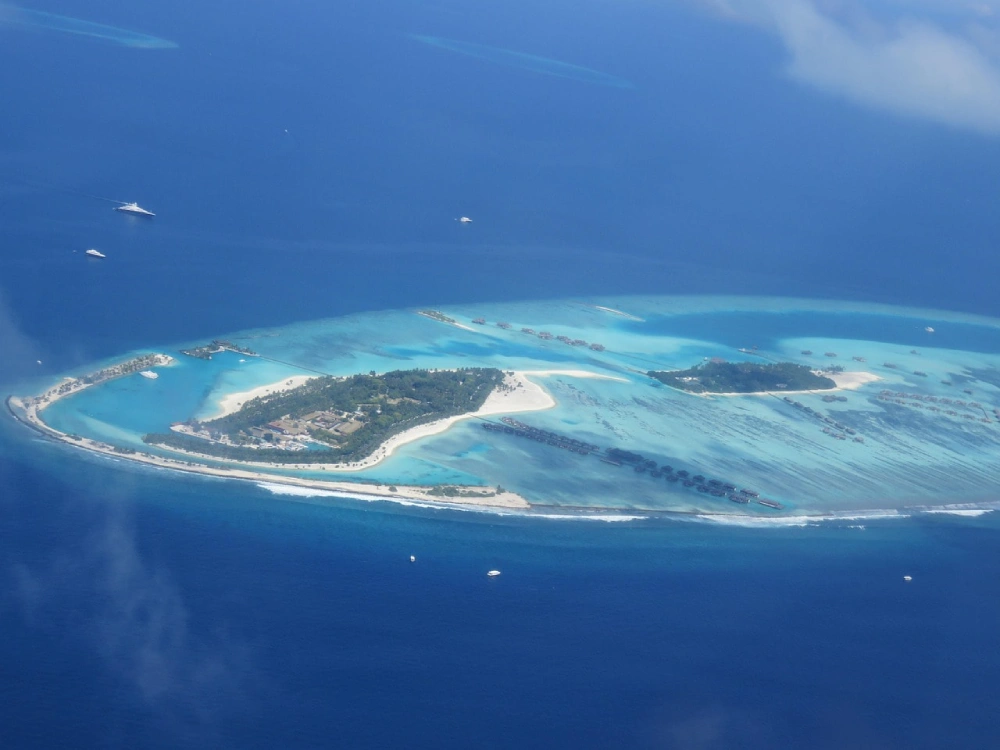
The Maldives consists entirely of locations, with over 1,200 coral islands formed by atoll systems. These reef environments support the nation’s economy through tourism while providing essential coastal protection against wave energy and tropical storms.
Maldivian reef regions face particular vulnerability to sea level rise and ocean warming due to their low elevation and dependence on coral reef growth to maintain island structures. Climate change impacts threaten both the coral reef ecosystems and the human communities they support.
Indian Ocean reef regions also include the Chagos Archipelago, which contains some of the most pristine reef systems remaining on Earth. These protected reef areas provide important baselines for understanding healthy ecosystem function and biodiversity.
Environmental Conditions Shaping Locations
Water Temperature and Coral Distribution
Marine temperatures represent the primary factor determining coral locations worldwide. Reef building corals require consistently warm temperatures, with optimal growth occurring between 77-84°F (25-29°C). This temperature requirement restricts reef areas to tropical and subtropical regions between approximately 30°N and 30°S latitude.
However, temperatures must remain within specific ranges to prevent coral reef whitening, a stress response where coral animals expel their symbiotic algae due to thermal stress. When marine temperatures exceed normal ranges by just 1-2°C for extended periods, widespread coral reef whitening can occur across entire reef systems.
Seasonal temperature variations also influence reef regions and species composition. Reef regions near the edges of coral distribution often experience more pronounced seasonal changes, leading to different coral communities adapted to variable temperature regimes.
Sunlight Requirements and Water Depth
Sunlight availability critically determines reef regions, as reef building corals depend on photosynthesis by their symbiotic algae for energy production. This requirement restricts most reef regions to shallow waters where sufficient sunlight can penetrate for photosynthesis.
The clarity of coastal waters significantly impacts the depth range where reef regions can develop. In clear tropical waters, corals may grow at depths up to 200 feet, while in turbid coastal areas, reef formation may be limited to much shallower depths where sunlight can still reach coral animals.
Different coral species show varying light requirements, creating distinct zonation patterns within reef regions. Shallow reef areas typically support different coral communities than deeper reef slopes, contributing to the overall biodiversity of coral ecosystems.
Wave Energy and Reef Structure
Wave energy patterns significantly influence the development and characteristics of coral locations. High-energy reef environments favor coral species adapted to strong wave action, while protected lagoons and back-reef areas support different coral communities adapted to calmer conditions.
The reef structure itself helps modify wave energy, with healthy marine reefs providing substantial shoreline protection by reducing wave heights before they reach coastal areas. This wave attenuation service represents one of the most valuable ecological services provided by coral locations.
Storm frequency and intensity also shape coral locations, as major tropical storms can cause significant physical damage to reef structures while also creating opportunities for coral regeneration and colonization of new areas.
Coastal Zone Interactions
Marine biodiversity zones exist within complex coastal zone environments where terrestrial and marine systems interact. Runoff from land can bring both nutrients and pollutants that significantly impact coral ecosystems, influencing coral growth, coral cover, and overall reef health.
Seagrass beds often occur adjacent to reef systems, creating interconnected ocean ecosystems where different areas support different life stages of many fish varieties. These ecosystem connections highlight the importance of managing entire coastal areas rather than individual reef sites in isolation.
Mangrove forests frequently occur near coral locations in tropical coastal areas, providing additional habitat diversity and serving as nursery areas for many fish varieties that later move to coral reef environments as adults.
Biodiversity and Ecosystem Services Amongst Coral reefs
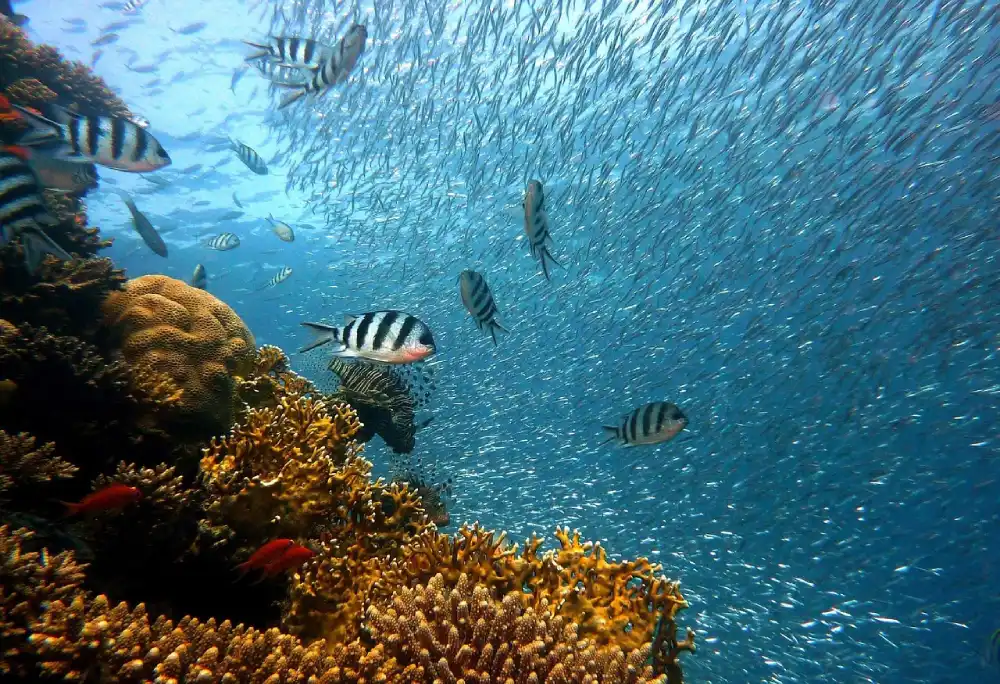
Marine Life Diversity in Coral Reef Ecosystems
Coral reefs support extraordinary biodiversity, with estimates suggesting these ecosystems contain 25% of all marine species despite occupying less than 1% of ocean area. This remarkable species diversity results from the complex three-dimensional reef structure created by reef building atolls, which provides countless microhabitats for different organisms.
Fish species diversity reaches its peak in coral locations, with individual reef systems supporting hundreds of different fish varieties adapted to various ecological niches. From tiny cleaner fish to large predatory species, symbiotic reef systems create complex food webs that demonstrate the interconnected nature of ocean ecosystems.
Beyond fish, coral locations support incredible diversity of invertebrates, including numerous species of coral animals, crustaceans, mollusks, and echinoderms. Many of these species show high levels of endemism, meaning they occur nowhere else on Earth, making atoll locations irreplaceable repositories of marine biodiversity.
Ecosystem Services Provided by Coral Reefs
Shoreline Protection
Coral reefs provide critical shoreline protection services, reducing wave power and protecting coastal communities from erosion and storm damage. Healthy marine reefs can reduce wave heights by up to 97% and wave power by up to 84%, providing natural coastal defense worth billions of dollars annually (2).
This shoreline protection becomes increasingly important as sea level rise and tropical storms intensify due to climate change. Coral locations serve as the first line of defense for many coastal communities, particularly on small islands where alternative coastal protection options may be limited or prohibitively expensive.
The economic value of shoreline protection provided by coral locations has been estimated at over $4 billion annually in the United States alone, demonstrating the substantial economic benefits these ecosystems provide beyond their biodiversity value3. Recent analysis shows that coral locations in the Asia-Pacific region alone contribute $25 billion annually to the regional economy from fishing and tourism4.
Fisheries Support
Coral reefssupport some of the world’s most productive fisheries, providing food security and livelihoods for millions of people worldwide. These productive ecosystems support both subsistence fishing for local communities and commercial fisheries that contribute to regional and global food systems.
The complex reef structure provides essential habitat for many commercially important fish varieties throughout their life cycles. Juvenile fish often use shallow reef areas and adjacent sea grass beds as nursery habitat before moving to deeper reef areas as adults.
Sustainable fisheries management around coral locations requires understanding the connectivity between different reef areas and the life cycles of important fish varieties. Many reef fish travel between different coral locations during their lifetimes, making regional management approaches essential for fisheries sustainability.
Tourism and Recreation
Coral reefs attract millions of tourists annually, supporting substantial tourism economies in tropical coastal regions. The beauty and diversity of coral ecosystems create unique recreational opportunities for snorkeling, diving, and underwater photography that cannot be replicated elsewhere.
Tourism based on coral locations provides significant economic benefits to local communities, creating jobs and generating revenue that can support conservation efforts. However, tourism pressure can also threaten coral ecosystems if not properly managed to minimize environmental impacts.
The economic value of coral reef tourism has been estimated at over $36 billion annually worldwide, demonstrating the substantial economic incentive for protecting and restoring coral locations5. Recent studies suggest healthy coral reef scenarios could deliver additional economic benefits amounting to over $34 billion in the Mesoamerican Reef and $36 billion in the Atoll Triangle between 2017 and 20306.
Food Web Dynamics in Coral Reefs
Coral areas support complex food webs that demonstrate the intricate relationships between different species within these ecosystems. Primary production by coral animals and their symbiotic algae forms the foundation of reef food webs, supplemented by other primary producers including algae, seagrass, and phytoplankton.
Herbivorous fish varieties play crucial roles in coral ecosystems by grazing on algae that could otherwise outcompete coral animals for space. This grazing pressure helps maintain the balance between atoll growth and algal growth that characterizes healthy reef areas.
Predatory fish varieties occupy various levels within coral reef food webs, from small carnivores feeding on invertebrates to large apex predators that help maintain ecosystem balance. The presence of healthy predator populations often indicates overall ecosystem health in reef sites.
Major Threats Facing Coral Habitats
Climate Change Impacts
Ocean Temperature Rise and Coral Bleaching
Rising marine temperatures represent the most significant threat facing coral reefs worldwide. Even small increases in temperatures can trigger coral reef whitening events where coral animals expel their symbiotic algae, leading to reduced coral growth and increased mortality if stress conditions persist.
Global coral reef whitening events have become increasingly frequent and severe, with major discoloration events occurring in 1998, 2010, 2014-2017, and the ongoing fourth global event that began in 2023. The current global bleaching event has affected 83.9% of the world’s coral reef area, making it the largest bleaching event on record7. These events demonstrate the global scale of climate change impacts on coral locations and the urgent need for both local and global action to address this crisis.
The 2014-2017 global bleaching event was previously considered the longest and most widespread, affecting 65.7% of global reef area. However, the current event, confirmed by NOAA in April 2024, has already surpassed this record8. Recovery from major discoloration events can take decades, but repeated discoloration events may prevent full recovery.
Ocean Acidification
Ocean acidification, caused by increased carbon dioxide absorption by seawater, poses a growing threat to coral reefs by making it more difficult for coral animals to build their calcium carbonate skeletons. This process reduces atoll growth rates and makes existing reef structures more vulnerable to erosion.
As ocean pH continues to decline, coral locations may become less able to maintain their complex three-dimensional structures that provide habitat for countless marine species. The combination of warming temperatures and acidification creates multiple stressors that may overwhelm coral adaptation capacity.
Research suggests that ocean acidification could reduce atoll growth rates by 10-50% by the end of this century, fundamentally altering the structure and function of coral locations worldwide. The world has already lost approximately 14% of its marine reefs since 2009, with current projections highlighting the risk of 90% of the world’s remaining reef ecosystems disappearing by 2050 without immediate action.
Human Activities Impacting Coral Reefs
Coastal Development and Pollution
Coastal development near coral reefs are often increases sedimentation and nutrient pollution that can smother atolls and promote algal growth that competes with coral animals for space. Urban runoff, agricultural chemicals, and sewage discharge all contribute to water quality degradation around reef sites.
Plastic pollution increasingly impacts coral locations, with microplastics being ingested by coral polyps and other reef organisms. Larger plastic debris can physically damage reef structures and create anoxic conditions that stress coral communities.
Chemical pollutants including sunscreens, pesticides, and industrial chemicals can disrupt coral reproduction and growth, adding to the cumulative stress facing atolls locations. Some sunscreen chemicals have been banned in certain jurisdictions to protect coral ecosystems.
Destructive Fishing Practices
Destructive fishing practices including blast fishing, cyanide fishing, and bottom trawling can cause immediate and long-lasting damage to coral reefs. These practices destroy reef structure and kill non-target species, reducing overall ecosystem health and resilience.
Overfishing of herbivorous fish varieties can disrupt the balance between coral growth and algal growth in coral locations, leading to algae-dominated systems that cannot support the same level of biodiversity as healthy atolls-dominated reefs.
Ghost fishing from lost or abandoned fishing gear continues to damage coral locations long after fishing activities end, with nets and lines entangling atolls and preventing normal growth and reproduction.
Invasive Species and Disease
Crown-of-Thorns Starfish Outbreaks
Crown-of-thorns starfish outbreaks represent a significant threat to coral reefsin the Indo-Pacific region. These atoll-eating starfish can rapidly consume large areas of coral cover, particularly when their natural predators are depleted by overfishing.
Major crown-of-thorns outbreaks have caused extensive damage to reef sites including the Great Barrier Reef, where control efforts involving manual removal and biological controls are ongoing. Understanding the causes of these outbreaks is crucial for protecting coral ecosystems.
Climate change may increase the frequency and severity of crown-of-thorns outbreaks by creating conditions that favor starfish survival and reproduction while simultaneously stressing coral communities and reducing their ability to recover from predation.
Coral Disease Outbreaks
Coral disease represents an emerging threat to coral reefs worldwide, with various bacterial, viral, and fungal pathogens causing mortality in coral communities. Stony atoll tissue loss disease has devastated coral locations throughout the Caribbean, killing entire coral colonies.
Disease outbreaks often coincide with other stressors including warming aqua temperatures and pollution, suggesting that stressed coral communities may be more susceptible to pathogen infection. Understanding these interactions is crucial for managing atoll locations effectively.
The spread of reef disease between reef regions can occur through natural water movement, shipping activities, and diving equipment, highlighting the need for biosecurity measures to prevent disease transmission between reef sites.
Conservation and Restoration of Coral Reefs
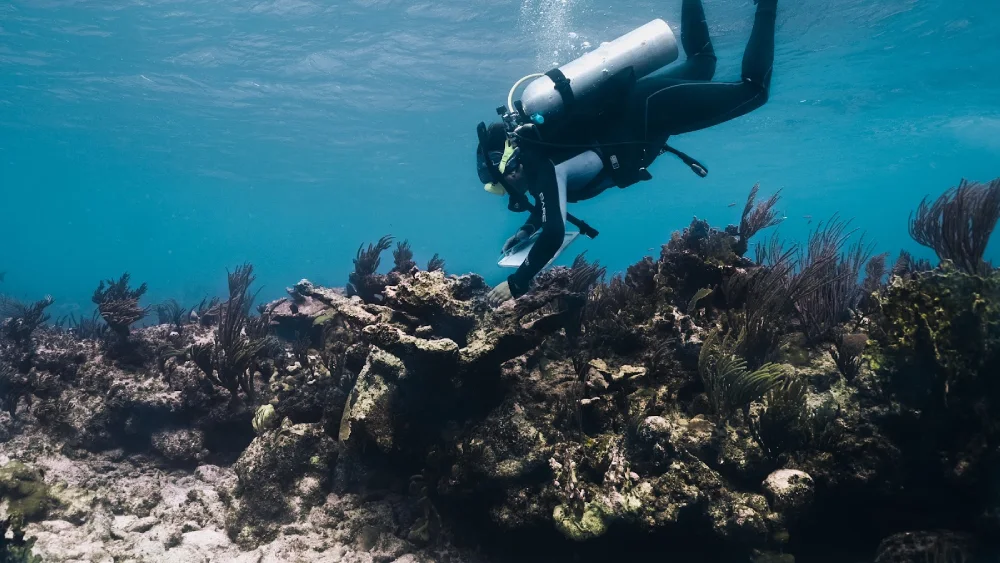
Protected Area Management
Marine protected areas (MPAs) represent one of the most important tools for conserving coral reefs. Well-managed MPAs can protect coral ecosystems from direct human impacts while allowing natural recovery processes to restore damaged areas.
The effectiveness of MPAs for reef protection depends on appropriate size, enforcement, and community support. Large, well-connected networks of protected reef regions provide better protection than small, isolated reserves that may be too small to maintain viable populations of key species.
Community-based management approaches have shown particular success in protecting reef regions in developing countries where local communities depend directly on reef resources. These approaches combine traditional ecological knowledge with modern conservation science.
Active Restoration Techniques
Coral Farming and Transplantation
Coral farming represents an increasingly important tool for restoring damaged coral reefs. Land-based coral farms can grow coral fragments under controlled conditions before transplanting them to degraded reef sites, accelerating natural recovery processes.
Advanced coral farming techniques including microfragmentation and fusion can dramatically accelerate coral growth rates, allowing rapid production of coral material for restoration projects. These techniques show particular promise for restoring large areas of damaged coral locations.
Coral farming also enables selective breeding and conditioning programs that may enhance coral resilience to environmental stressors including warming temperatures and acidification. These approaches could help reef regions adapt to changing environmental conditions.
Assisted Evolution and Coral Resilience
Assisted evolution techniques aim to enhance coral resilience through selective breeding, probiotic treatments, and genetic approaches that may help coral polyps adapt to changing environmental conditions. These cutting-edge approaches offer hope for maintaining reef regions in a changing climate.
Research into coral genetics has identified genes associated with thermal tolerance and other stress resistance traits that could be enhanced through selective breeding programs. These approaches may be crucial for maintaining reef regions as marine temperatures continue to rise.
Probiotic treatments that introduce beneficial bacteria to coral polyps show promise for enhancing coral health and disease resistance. These biological approaches complement physical restoration efforts by improving coral survival and growth rates.
Community Engagement and Education
Successful conservation of coral locations requires engaging local communities who depend on these ecosystems for their livelihoods. Education programs that highlight the value of coral ecosystems can build support for conservation measures and sustainable use practices.
Tourism can provide economic incentives for protecting coral locations when managed sustainably. Dive operators, tour guides, and other tourism professionals can serve as important ambassadors for coral reef conservation.
Citizen science programs allow volunteers to contribute to coral reef monitoring and restoration efforts, expanding the capacity for conservation work while building public awareness of coral locations and their importance.
The Future of Coral Reef
Climate Change Adaptation
The future of coral reefs depends heavily on global efforts to reduce greenhouse gas emissions and limit climate change impacts. Even with aggressive climate action, coral locations will need to adapt to some level of environmental change.
Coral locations in naturally warmer areas or those with greater thermal variability may serve as refugia where coral communities can persist even as other areas become unsuitable. Identifying and protecting these refugia represents a critical conservation priority.
Connectivity between reef ecosystems will be crucial for allowing coral larvae to recolonize areas where local populations may be lost to environmental stress. Maintaining networks of protected reef ecosystems can support this natural recovery process.
Technological Innovations
Emerging technologies including artificial intelligence, remote sensing, and genetic tools are revolutionizing our ability to monitor and manage aquatic ecosystems. These tools can provide early warning of discoloration events and guide rapid response efforts.
Advanced coral farming techniques continue to evolve, with new approaches for growing coral, enhancing resilience, and scaling up restoration efforts. These technological advances offer hope for restoring degraded reef ecosystems at unprecedented scales.
Innovative approaches including 3D printing of reef structures and deployment of artificial reef ecosystems may help supplement natural reef sites while providing ecosystems for marine life during coral recovery periods.
Global Cooperation and Policy
Protecting coral reefs requires international cooperation given the global nature of climate change and the connectivity of ocean ecosystems. International agreements and funding mechanisms can support conservation efforts in developing countries with limited resources.
The economic value of ecological services provided by reef ecosystems provides compelling arguments for investing in conservation and restoration efforts. Economic analyses demonstrate that protecting coral reefs provide an excellent returns on investment through avoided damages and continued ecological services.
Policy frameworks that address both local and global threats to these locations are essential for effective conservation. These frameworks must integrate climate action with local management measures to address the full range of threats facing coral ecosystems.
Conclusion
Coral reefs represent some of Earth’s most precious and vulnerable ecosystems, supporting extraordinary biodiversity while providing essential services to human communities worldwide. From Australia’s Great Barrier Reef to the coral atolls of the Pacific and the barrier reefs of the Caribbean, these ocean ecosystems face unprecedented challenges from climate change and anthropogenic activities.
The future of coral regions depends on immediate action to address both global climate change and local threats. While the challenges are significant, innovative restoration techniques, improved management practices, and growing public awareness provide hope for maintaining these vital ecosystems. Through continued research, conservation efforts, and global cooperation, we can work to ensure that coral regions continue to thrive and support marine biodiversity for generations to come.
Understanding the global distribution of coral regions and the services they provide helps us appreciate their immense value and the urgency of protecting them. Every action taken to reduce greenhouse gas emissions, improve water quality, and support sustainable management contributes to the long-term survival of these remarkable ecosystems.
About Coral Vita
Coral Vita is a mission-driven company dedicated to restoring our world’s dying and damaged reefs. Using innovative land-based farming techniques, Coral Vita grows diverse and resilient corals in months instead of the decades they take in nature. These corals are then transplanted into threatened reefs, helping to preserve ocean biodiversity while protecting coastal communities that depend on healthy reefs for protection, food, and income].
Founded by environmental entrepreneurs Sam Teicher and Gator Halpern, Coral Vita’s high-tech coral farms incorporate breakthrough methods to restore reefs in the most effective way possible. In 2021, the company was recognized as the inaugural winner of Prince’s William’s Revive Our Oceans Earthshot Prize Winner for their pioneering work in coral restoration.
To learn more about Coral Vita’s work or to get involved in coral reef conservation efforts, visit their website at www.coralvita.co or contact them directly through their Contact Us page.
Frequently Asked Questions
Where are most coral reef locations found around the world?
Most of these locations are found in tropical waters between 30°N and 30°S latitude, where temperatures remain warm year-round. The Indo-Pacific region contains the highest concentration of reef ecosystems, including the Great Barrier Reef and Southeast Asian reefs.
What are the three main types of coral reefs?
The three main types are fringing reefs (directly attached to shorelines), barrier reefs (parallel to coasts but separated by lagoons), and atolls (ring-shaped reefs around central lagoons). Each type forms under different geological conditions and supports distinct coral communities.
Why are coral habitats important for marine biodiversity?
These locations support 25% of all marine species despite covering less than 1% of ocean area. The complex three-dimensional structure created by reef building corals provides countless ecosystems for fish, invertebrates, and other marine organisms.
What are the biggest threats to coral reefs today?
Climate change represents the greatest threat, causing coral reef whitening through rising marine temperatures and reducing coral growth through acidification. Human interventions including pollution, coastal development, and destructive fishing practices also significantly impact reef ecosystems worldwide.
References
- https://www.weforum.org/stories/2023/11/coral-reef-breakthrough-blue-economy/ ↩︎
- https://coralreefwatch.noaa.gov/satellite/research/coral_bleaching_report.php ↩︎
- https://www.sciencedirect.com/science/article/pii/S0308597X23004724 ↩︎
- https://www.unep.org/resources/report/coral-reef-economy ↩︎
- https://earth.org/scientists-confirm-largest-coral-bleaching-event-on-record-affecting-nearly-84-of-worlds-reefs/ ↩︎
- https://www.noaa.gov/news-release/noaa-confirms-4th-global-coral-bleaching-event ↩︎
- https://www.nature.com/articles/nclimate1122 ↩︎
- https://www.unep.org/news-and-stories/story/worlds-corals-are-bleaching-heres-why-and-what-it-means-oceans-future ↩︎



